
How to Use Relay HK4100F: Examples, Pinouts, and Specs
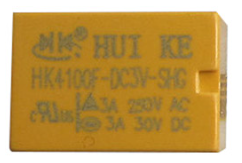
 Design with Relay HK4100F in Cirkit Designer
Design with Relay HK4100F in Cirkit DesignerIntroduction
The Relay HK4100F, manufactured by Boh, is an electromagnetic switch designed to control high voltage or high current circuits using a low voltage signal. Its compact design and reliable operation make it a versatile component in various applications. The relay is widely used in automation, control systems, home appliances, and industrial equipment. It allows for electrical isolation between the control circuit and the load, ensuring safety and efficiency.
Explore Projects Built with Relay HK4100F
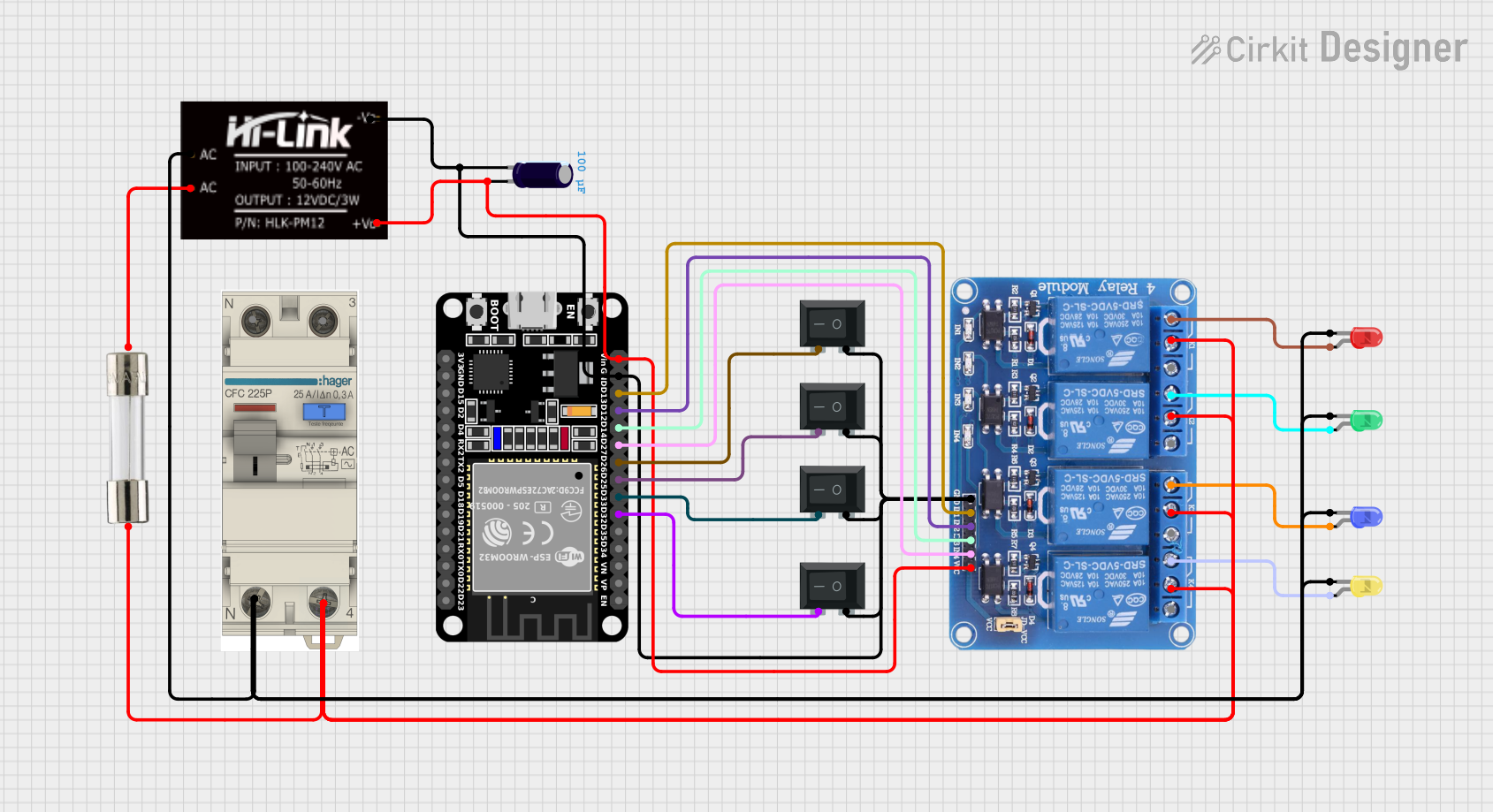
 Open Project in Cirkit Designer
Open Project in Cirkit Designer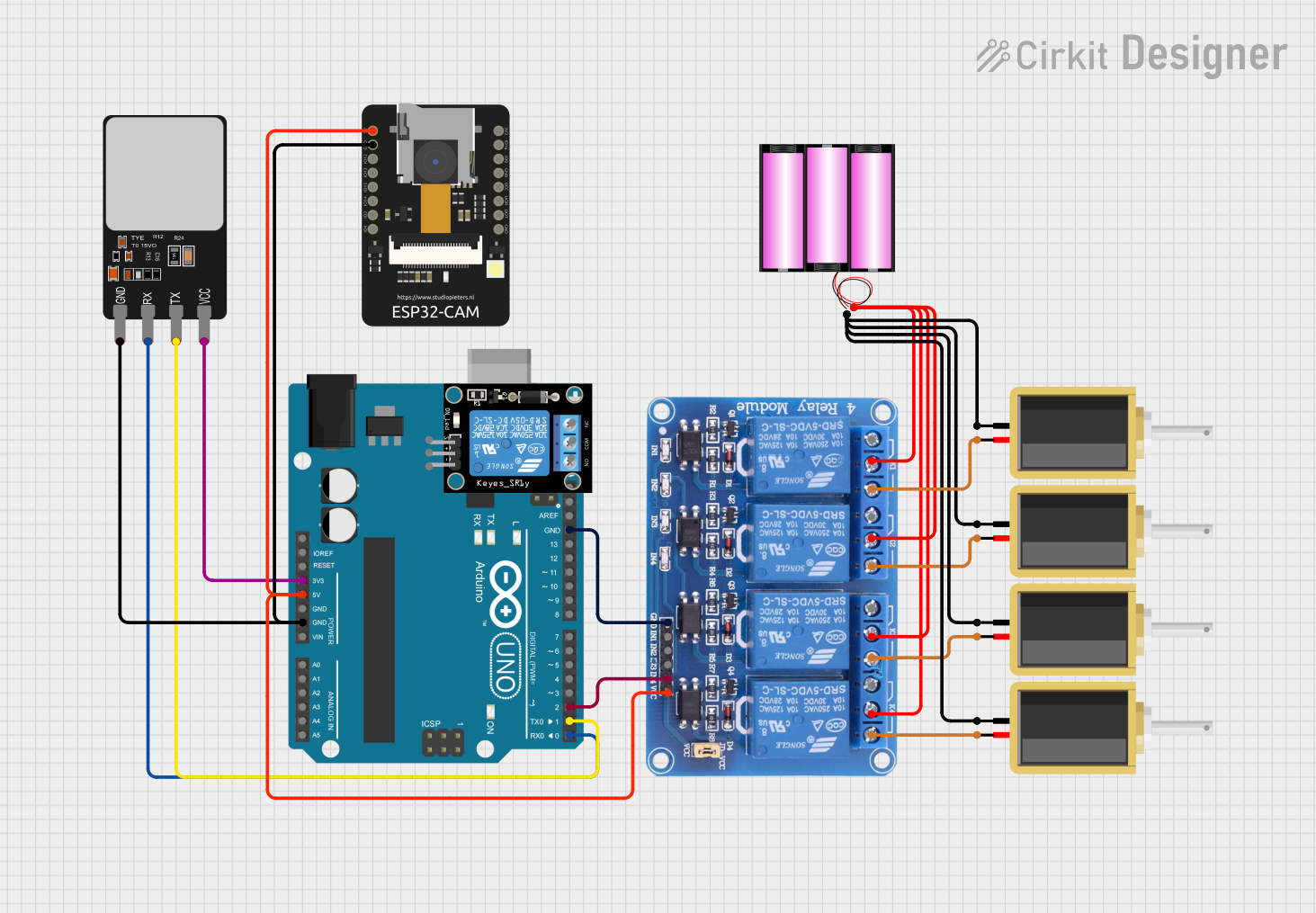
 Open Project in Cirkit Designer
Open Project in Cirkit Designer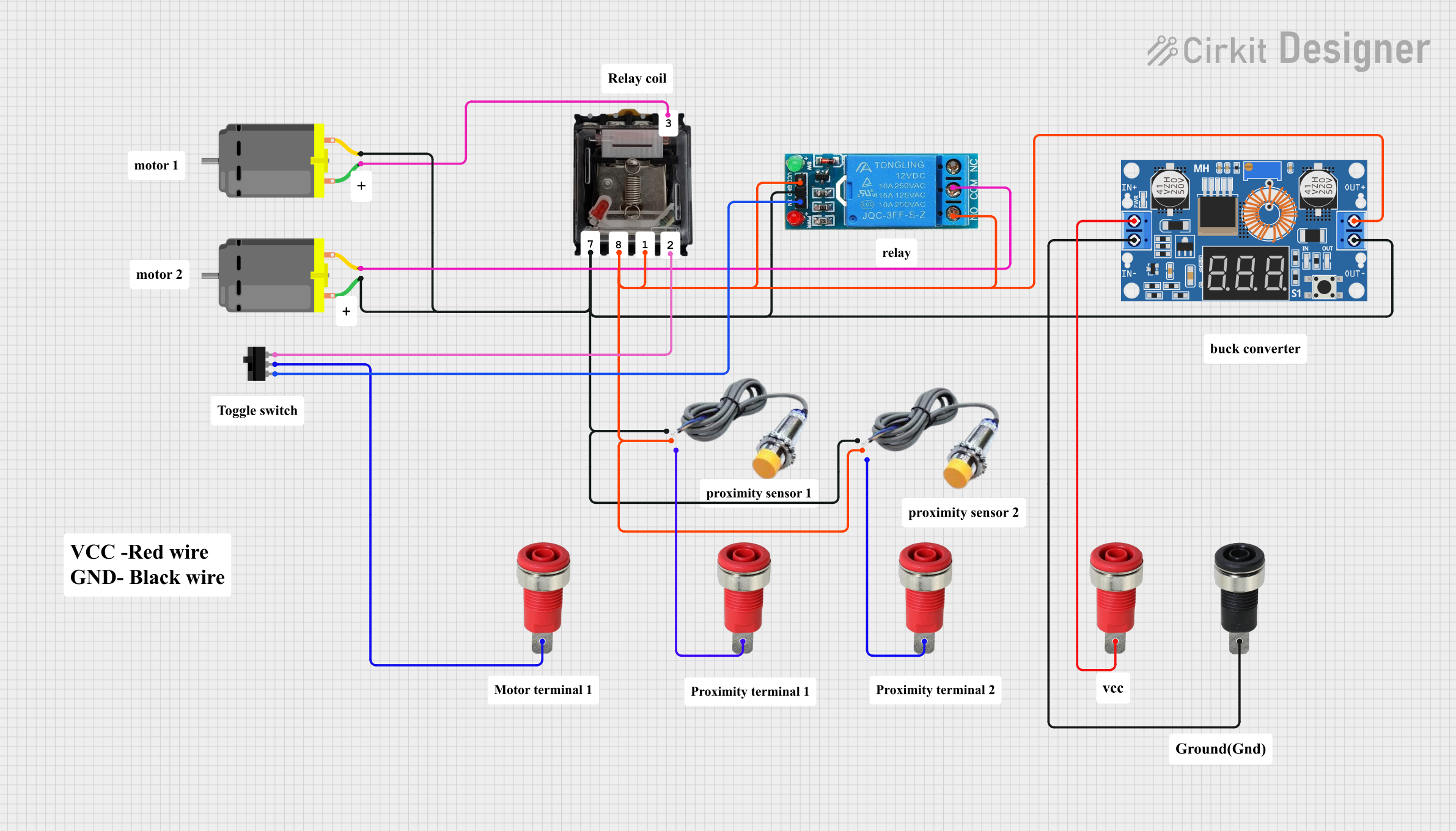
 Open Project in Cirkit Designer
Open Project in Cirkit Designer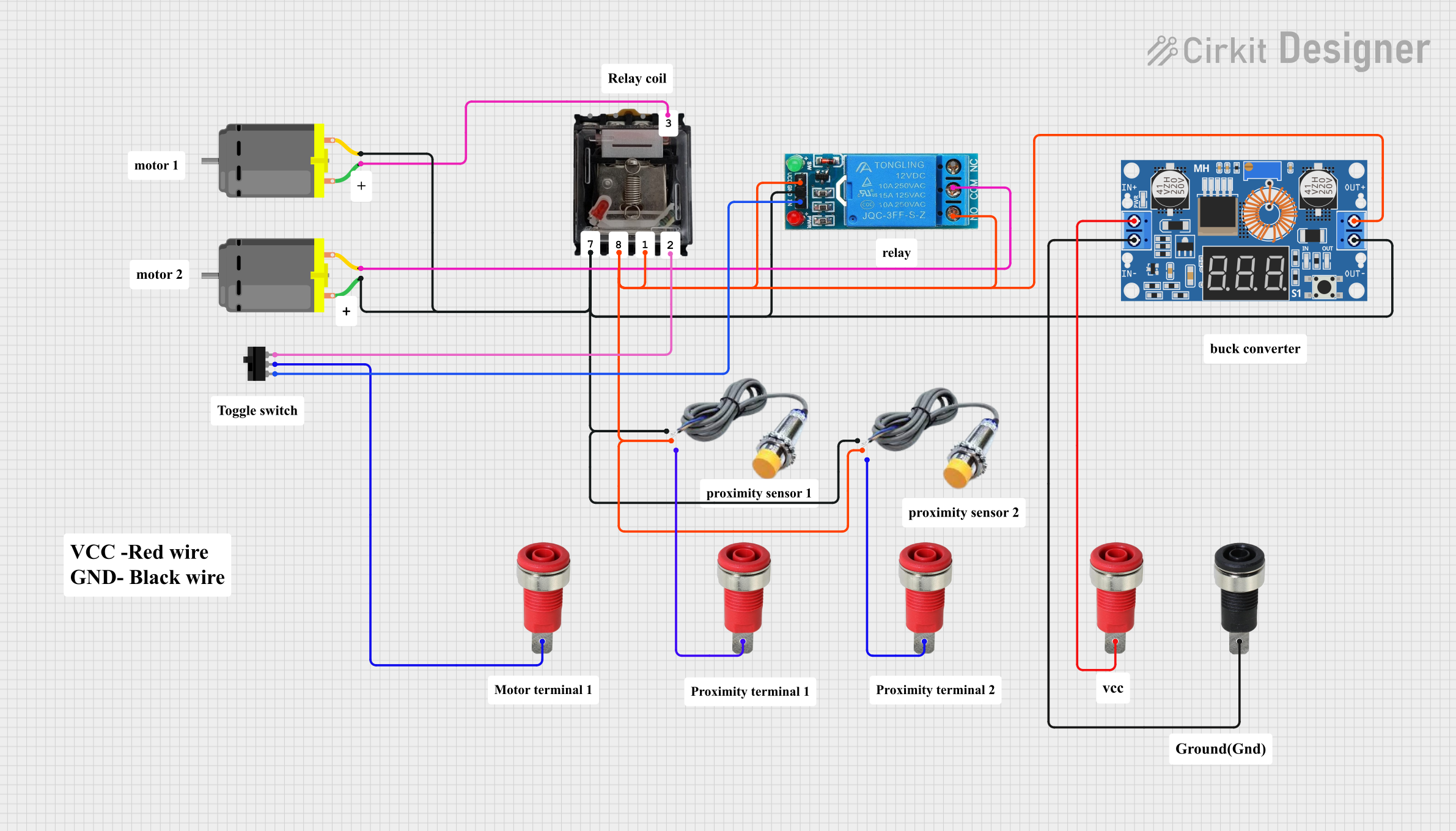
 Open Project in Cirkit Designer
Open Project in Cirkit DesignerExplore Projects Built with Relay HK4100F

 Open Project in Cirkit Designer
Open Project in Cirkit Designer
 Open Project in Cirkit Designer
Open Project in Cirkit Designer
 Open Project in Cirkit Designer
Open Project in Cirkit Designer
 Open Project in Cirkit Designer
Open Project in Cirkit DesignerCommon Applications
- Home automation systems
- Industrial control panels
- Motor control circuits
- Power distribution systems
- Signal switching in electronic devices
Technical Specifications
Key Specifications
| Parameter | Value |
|---|---|
| Manufacturer | Boh |
| Part ID | Relay HK4100F |
| Coil Voltage (Nominal) | 5V, 12V, 24V (varies by model) |
| Coil Resistance | 70Ω (5V model) |
| Contact Configuration | SPDT (Single Pole Double Throw) |
| Contact Rating | 10A at 250VAC / 10A at 30VDC |
| Switching Voltage | Max 250VAC / 30VDC |
| Switching Current | Max 10A |
| Dielectric Strength | 1500VAC (coil to contact) |
| Operating Temperature | -40°C to +85°C |
| Dimensions | 19mm x 15.5mm x 15mm |
| Weight | Approx. 10g |
Pin Configuration
The Relay HK4100F has five pins, as described in the table below:
| Pin Number | Name | Description |
|---|---|---|
| 1 | Coil (+) | Positive terminal of the relay coil |
| 2 | Coil (-) | Negative terminal of the relay coil |
| 3 | Common (COM) | Common terminal for the switching contacts |
| 4 | Normally Open (NO) | Open when the relay is inactive; closes when activated |
| 5 | Normally Closed (NC) | Closed when the relay is inactive; opens when activated |
Usage Instructions
How to Use the Relay HK4100F in a Circuit
- Power the Coil: Connect the relay coil pins (1 and 2) to a DC voltage source matching the relay's rated coil voltage (e.g., 5V, 12V, or 24V). Use a current-limiting resistor if necessary.
- Control the Load: Connect the load circuit to the Common (COM) pin (3) and either the Normally Open (NO) pin (4) or Normally Closed (NC) pin (5), depending on the desired behavior:
- Use the NO pin if the load should be powered only when the relay is activated.
- Use the NC pin if the load should be powered when the relay is inactive.
- Activate the Relay: Apply the rated voltage to the coil to activate the relay. This will switch the contacts, allowing current to flow through the NO pin or disconnecting the NC pin.
Important Considerations
- Back-EMF Protection: Always use a flyback diode across the relay coil to protect the driving circuit from voltage spikes caused by the coil's inductance.
- Contact Ratings: Ensure the load does not exceed the relay's contact ratings (10A at 250VAC or 30VDC).
- Isolation: Maintain proper isolation between the control and load circuits to prevent damage or hazards.
- Mounting: Secure the relay in a stable position to avoid mechanical stress or vibration.
Example: Connecting the Relay HK4100F to an Arduino UNO
Below is an example of how to control the Relay HK4100F using an Arduino UNO:
// Define the pin connected to the relay's coil
const int relayPin = 7;
void setup() {
// Set the relay pin as an output
pinMode(relayPin, OUTPUT);
// Start with the relay off
digitalWrite(relayPin, LOW);
}
void loop() {
// Turn the relay on
digitalWrite(relayPin, HIGH);
delay(1000); // Keep the relay on for 1 second
// Turn the relay off
digitalWrite(relayPin, LOW);
delay(1000); // Keep the relay off for 1 second
}
Note: Use a transistor or relay driver circuit to interface the Arduino with the relay, as the Arduino's GPIO pins cannot directly supply the required current for the relay coil.
Troubleshooting and FAQs
Common Issues and Solutions
Relay Not Activating
- Cause: Insufficient voltage or current to the coil.
- Solution: Verify the power supply voltage matches the relay's rated coil voltage. Check for loose or incorrect connections.
Load Not Switching
- Cause: Incorrect wiring of the load circuit.
- Solution: Ensure the load is connected to the correct pins (COM and NO/NC) and that the relay is properly activated.
Excessive Heat
- Cause: Overloading the relay contacts.
- Solution: Ensure the load current and voltage do not exceed the relay's contact ratings.
Noise or Chattering
- Cause: Unstable control signal or insufficient coil voltage.
- Solution: Use a stable power source and ensure the control signal is clean and consistent.
FAQs
Q1: Can the Relay HK4100F be used with AC loads?
Yes, the relay can switch AC loads up to 250VAC, provided the current does not exceed 10A.
Q2: What is the purpose of the flyback diode?
The flyback diode protects the driving circuit from voltage spikes generated when the relay coil is de-energized.
Q3: Can I use the Relay HK4100F with a 3.3V microcontroller?
Yes, but you will need a transistor or relay driver circuit to amplify the control signal to the relay's rated coil voltage.
Q4: How do I know if the relay is activated?
You can hear a clicking sound when the relay switches, or you can measure the continuity between the COM and NO/NC pins.
By following this documentation, you can effectively integrate the Relay HK4100F into your projects and troubleshoot any issues that arise.